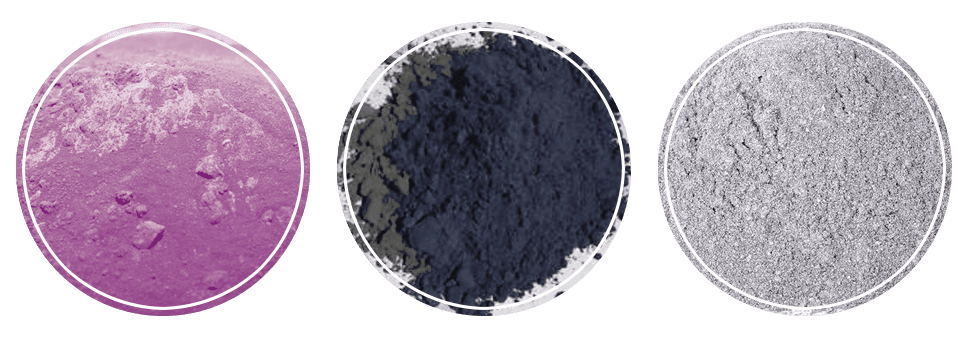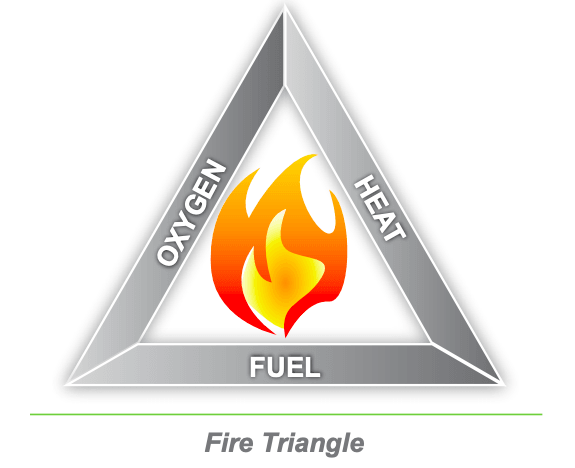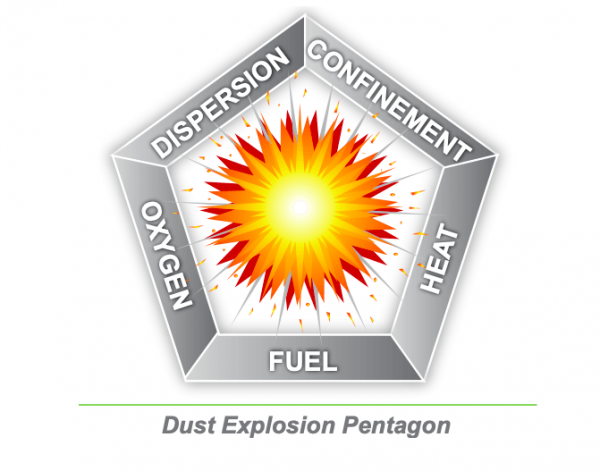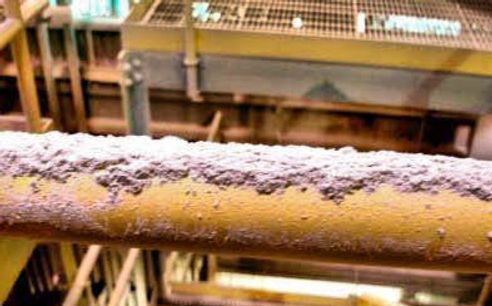An Introduction to Combustible Dust Explosions
- HafcoVac
- February 02, 2020
- 8255
Combustible dust explosions are one of the most underestimated hazards in industrial settings. This is simply because people are not aware of how common and dangerous combustible dust can be.
Consider this: According to a study by the Chemical Safety Board (CSB), there have been 111 dust-related fires that resulted in 66 deaths and 337 injuries between 2006 and 2017.
In this article, we will discuss the causes of these dust explosions and shed light on how to prevent them.
Let's start by discussing what combustible dust is and why it is so dangerous.
What Is Combustible Dust?
Combustible dust is any type of fine substance that has the capability to burn, which can then lead to an explosion hazard under the right circumstances.

Dust can accumulate from conveying, handling and storing the following materials:
- Organic materials like sugar, grain, wood, etc.
- Synthetic materials like plastic, pesticides, etc.
- Peat and coal
- Metals like aluminum, bronze, etc.
- Nonmetallic and inorganic substances like rubber
While these materials may be non-combustible when settled on a surface, they can pose an explosion risk when the dust particles are dispersed in air in the correct concentration.
What Is a Dust Explosion?
A dust explosion occurs when fine particles, suspended in the air in a confined area with sufficient concentration, combust rapidly. Simply put, when too much combustible dust accumulates and is exposed to a spark, that dust will explode.
In general, the dust cloud that results from the processing of raw materials in some industries is extremely combustible and only requires a light ignition source. If this rapid burning of dust particles takes place in an enclosed room, pressure could build up and cause equipment to explode. Ultimately, this could result in serious damage to the facility and loss of limb or life to the workers.
Here are some industries that face an increased risk of dust explosions:
- Food products
- Lumber and wood products
- Chemical manufacturing
- Primary metal industries
How Do Dust Explosions Occur?

A fire needs three elements to ignite: oxygen, heat and fuel (dust). Also known as the fire triangle, when these three combine with dust particles dispersed in abundance, they can cause violent combustion called deflagration. If another element – confinement – is introduced to this equation, the result is a deadly explosion due to an immense rise in pressure.

These five elements (oxygen, heat, fuel, dispersion and confinement) combined are called the "Dust Explosion Pentagon," and exclusion of any one of them can prevent a fire or an explosion.
What Makes Dust Explosions So Destructive?
Dust explosions are divided into two types:
Primary Dust Explosions
This usually occurs in smaller spaces like rooms, containers or inside equipment. It happens due to the accumulation of dust in these confined spaces which reacts to an ignition source and starts a fire.
Secondary Dust Explosion
Vibration caused by the primary explosions may result in more dust being dislodged into the air or may simply damage a containment system like a container or a vessel. As a result, more dust becomes airborne that may result in another explosion.
In contrast to primary explosions, these can be far more deadly due to an increased concentration and quantity of combustible dust. It is believed that this type of explosion is the real culprit that has caused so much destruction and casualties in the past.
Now that we understand the causes and types of dust explosion, let's look at the possibilities of preventing them.
How to Prevent Dust Explosions
As we have learned earlier, the exclusion of even a single element from the "Dust Explosion Pentagon" can eliminate the risk entirely; hence, the primary goal should be implementing a safe housekeeping regimen focusing on disposing of the fuel and safeguarding against any ignition source.
To do this, first and foremost, you have to reduce the accumulation of dust from all locations within the factory. This process consists of three essential tasks:
- Identifying problem areas
- Identifying if dust accumulated in these problem areas is combustible
- Getting rid of the dust
1. Identifying Problem Areas
In plants and industrial sites where powder processing takes place, some dust is bound to escape from the conveyors or other equipment. Naturally, this dust settles on horizontal surfaces near the source.
When this dust becomes dislodged, it is referred to as fugitive dust. The amount of fugitive dust is measured by OSHA and must be under a certain level for the facility to be compliant.
To reduce the amount of fugitive dust in a facility, you need to remove dust as soon as it settles onto all surfaces, even those that are commonly overlooked such as roof support, support steel, piping and cable trays.
2. Identifying if Dust Accumulated in These Problem Areas Is Combustible
Conducting a thorough analysis of the various types of dust present in the vicinity is crucial, especially since not all types of dust are considered to be combustible. While it is preferable to clear out all types of dust from a facility, identifying problem areas can further help reduce the risk of a fire.
As part of the most recent update to NFPA 652, all chemical, wood processing, metals, and agricultural industry facilities must have a DHA (dust hazard analysis) completed by September 7, 2020, with a follow-up analysis done every five years.
3. Getting Rid of the Dust
The elimination of combustible dust requires regular cleaning, but just sweeping it away will not be enough; this will simply make it accumulate in some other place.
This is where vacuums come in handy as they draw up the dust from various surfaces with efficiency. And this is why intrinsically safe vacuums are highly recommended for these types of applications where there is an increased risk of combustion.
Per NFPA 652 standards, when using a vacuum to draw up dust, the vacuum and its tools must be grounded and bonded to avoid static discharge. Make sure when choosing a vacuum, you choose one with built-in grounding to comply with NFPA's standards for portable vacuum cleaners.
It's also important to note that if you choose to remove dust using the compressed air blowdown method, you will still need to use a vacuum to clean the area first, per section 8.4.2.6.2.
HafcoVac's Explosion-Proof Vacuum Cleaners

These explosion-proof vacuums are certified which means that they are designed to be used under possible explosive conditions. They are also NRTL approved, ATEX certified and recommended for use in OSHA's hazardous environments.
Being air-powered, they do not contain any motors or mechanical moving parts that can generate an electric charge. This makes them safe for use in many conditions where there is risk of a possible fire, compared to traditional shop vacs where the electric motor can create a spark or charge due to friction.
HafcoVac's explosion-proof vacuums are cost-effective, non-electric vacuums that are renowned for their reliability, and are an excellent long-term solution to getting rid of combustible dust.
Key Advantages of Using Hafcovac's Explosion-Proof Vacuum
- No electricity
- Fully grounded
- No moving parts
This vacuum comes with advanced safety features; where electrically powered vacuums generate heat and static charge buildup, HafcoVac's pneumatic vacuums ensure that the charge is properly grounded so as to prevent combustion.
Some applications of this vacuum include:
- Operation in hazardous locations
- Removing combustible dust
- Recovering flammable by-products
- Recovering hazardous by-products
- Safe removal of static-prone materials
All-in-all, explosion-proof vacuums are an excellent preventive measure for dust explosions. Get in touch with HafcoVac today for more information on explosion-proof vacuums.


